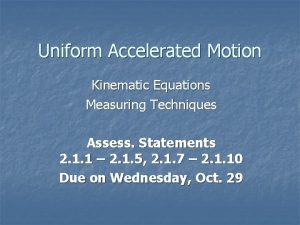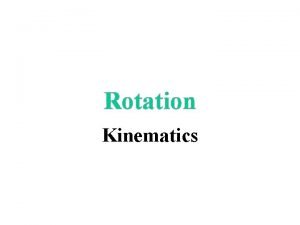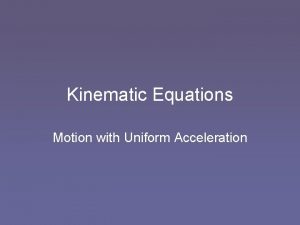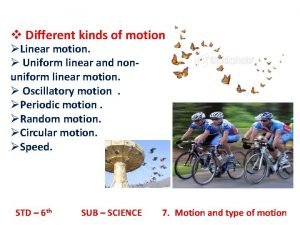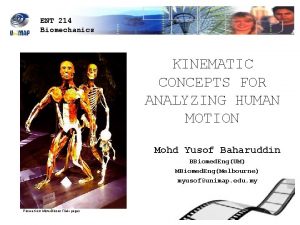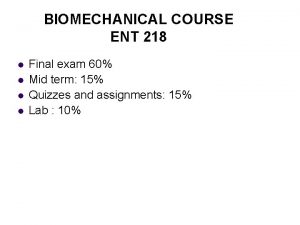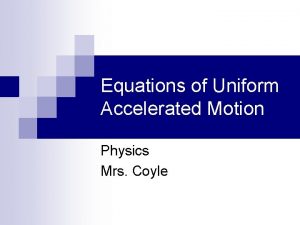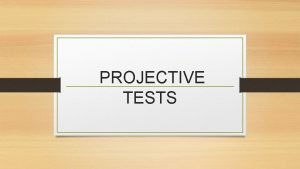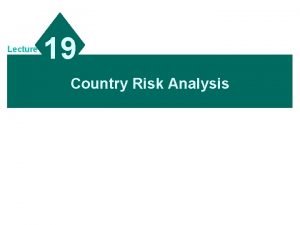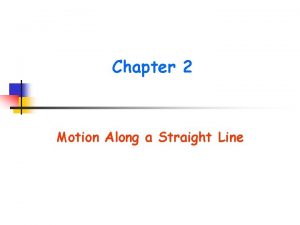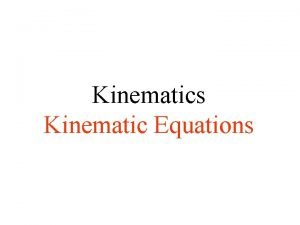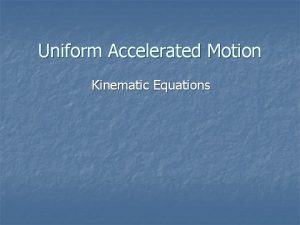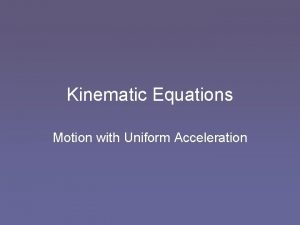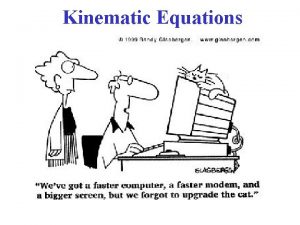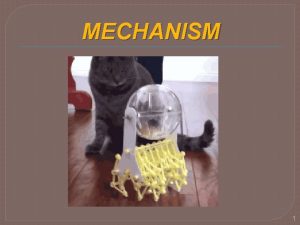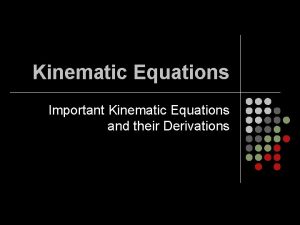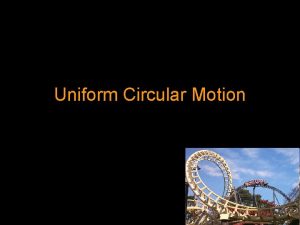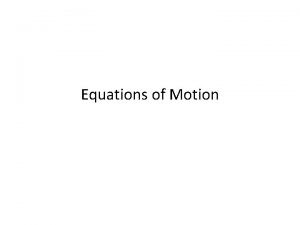Uniform Accelerated Motion Kinematic Equations Measuring Techniques Assess












- Slides: 12

Uniform Accelerated Motion Kinematic Equations Measuring Techniques Assess. Statements 2. 1. 1 – 2. 1. 5, 2. 1. 7 – 2. 1. 10 Due on Wednesday, Oct. 29

Uniform Accelerated Motion n Acceleration: The rate at which an object’s velocity changes n Units = m·s-2 n

Measuring Acceleration Experimentally n 1 example: Photogates: Like you did in this lab, photogates can be used to determine the time it takes an object to travel a short distance, therefore you can determine instantaneous velocities n 2 photogates allow you to determine an initial velocity, a final velocity, and a total time between the two. n

Kinematic Equations n Kinematic Equations are considered to be “equations of motion” and are based on the fundamental definitions of average velocity and acceleration:

Our variables n There are 5 basic variables that are used in any motion-related calculation: n n n n Initial Velocity = v 0 or vi or v 1 or u Final Velocity = v or vf or v 2 Acceleration = a Displacement = d (sometimes also s or could be Dx) Time = t Bold face indicates a vector Each of the kinematic equations will use 4 of these 5 variables

Deriving the Equations n Each of the kinematic equations starts with a rearranged version of the equation for average velocity: And uses substitution, rearranging, and simplifying the equations to get to the end result. For example…

Kinematics Equation #1 n n n Step 1: Step 2: Substitute equation for Step 3: Rearrange acceleration equation to solve for t, then substitute Step 4: Simplify by multiplying fractions Step 5: Rearrange → →

Kinematics Equation #2 n n n Step 1: Step 2: Substitute Step 3: Rearrange acceleration equation to solve for v, then substitute Step 4: Simplify Step 5: Distribute the t through the equation Step 6: Simplify again → →

Summary of Equations n You will NOT be required to memorize these

Problem Solving Strategy n n When given problems to solve, you will be expected to “show your work” COMPLETELY! “Showing work” means that you will be expected to include the following pieces in your full answer (or you will not receive full credit for the problem…) n n n List of variables – include units on this list Equation – in variable form (no numbers plugged in yet) If necessary, show algebra mid-steps (still no numbers) Plug in your value(s) for the variables Final answer – boxed/circled with appropriate units and sig figs

Practice Problem #1 A school bus is moving at 25 m/s when the driver steps on the brakes and brings the bus to a stop in 3. 0 s. What is the average acceleration of the bus while braking? v = 0 m/s u = 25 m/s t = 3. 0 s a=? a = -8. 3 m/s 2

Practice Problem #2 n An airplane starts from rest and accelerates at a constant 3. 00 m/s 2 for 30. 0 s before leaving the ground. (a) How far did it move? (b) How fast was it going when it took off? v=? u = 0 m /s t = 30. 0 s a = 3. 00 m/s 2 s= ? s = 1350 m v = 90. 0 m/s
 Kinematic equations rearranged
Kinematic equations rearranged Urm motion
Urm motion Rotation kinematic equations
Rotation kinematic equations Kinematic equations for circular motion
Kinematic equations for circular motion Formula for time of flight in projectile motion
Formula for time of flight in projectile motion Which type of motion
Which type of motion Kinematic concepts for analyzing human motion
Kinematic concepts for analyzing human motion Tools for measuring kinematic quantities
Tools for measuring kinematic quantities Uniform motion equation
Uniform motion equation Define projective test
Define projective test Techniques to assess country risk
Techniques to assess country risk It is a motion along a straight line
It is a motion along a straight line Purpose of kinematic equations
Purpose of kinematic equations
